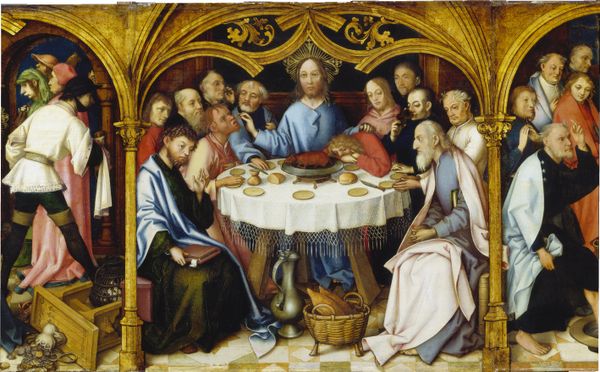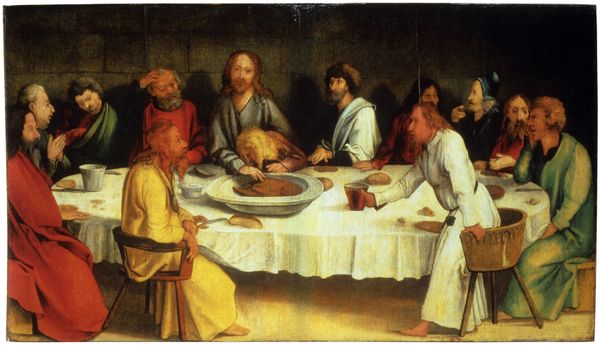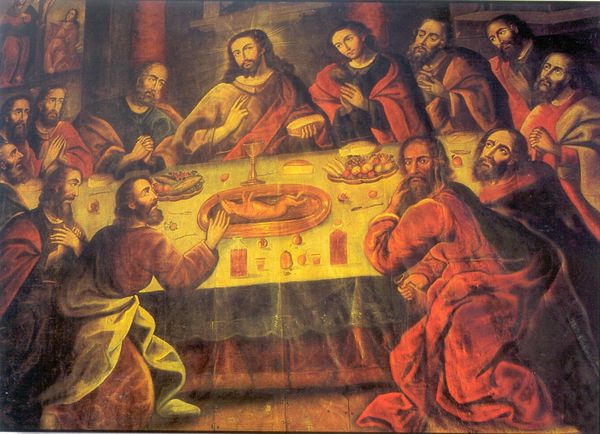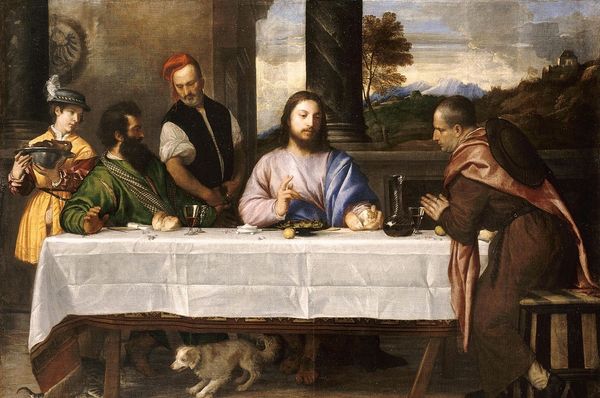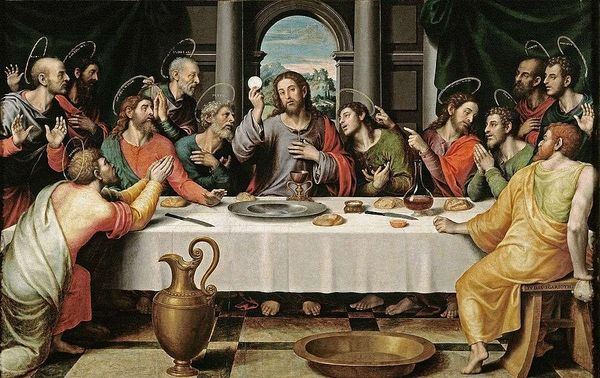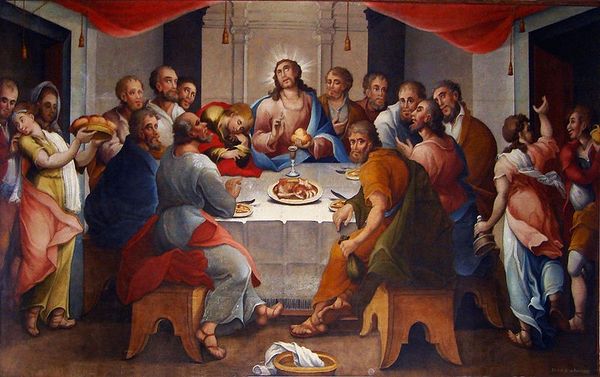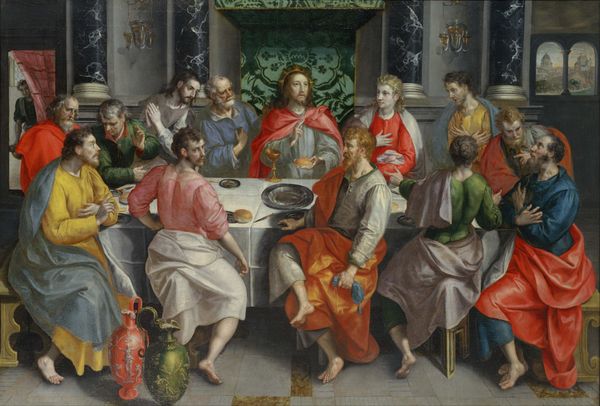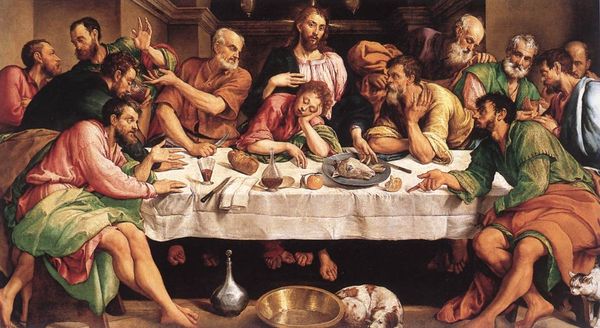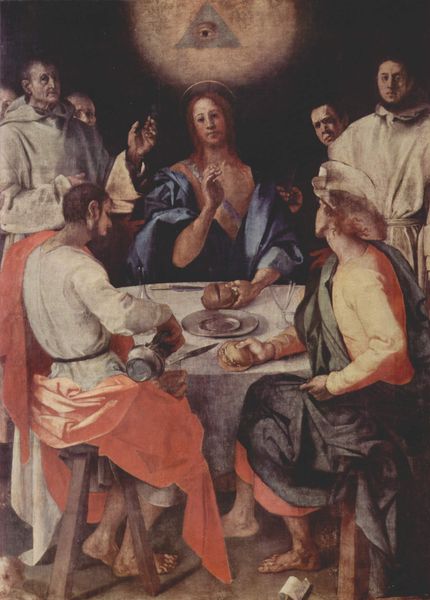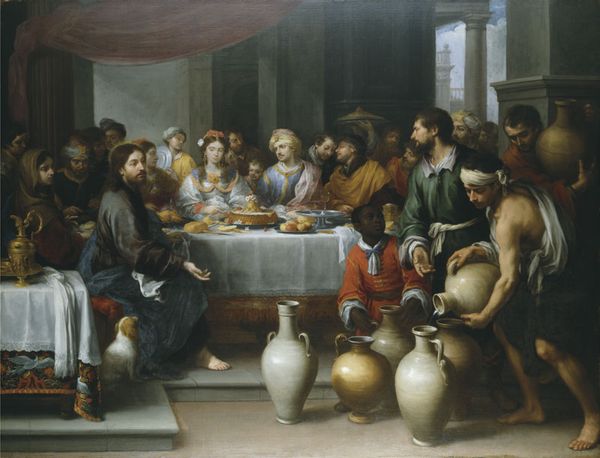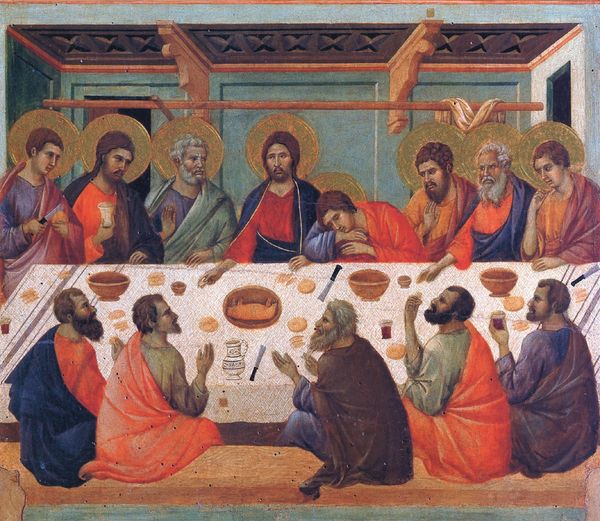
painting, oil-paint
#
narrative-art
#
painting
#
oil-paint
#
figuration
#
oil painting
#
jesus-christ
#
christianity
#
genre-painting
#
history-painting
#
italian-renaissance
#
portrait art
#
christ
Dimensions: 65 x 48 cm
Copyright: Public domain
Curator: Standing before us is "The Last Supper" by Hans Holbein the Younger, created around 1525. The work, rendered in oil, depicts that pivotal moment in Christian tradition. Editor: My first thought? It’s strangely… subdued. Compared to other depictions, there's a restraint here, an almost hushed atmosphere that is heavy with an anticipation of events to come. Curator: Holbein has definitely taken liberties with the standard iconography. The halos are missing, the architecture seems domestic rather than grand, it makes it feel like a moment of intimate contemplation among these figures. Editor: It speaks to a Northern Renaissance sensibility, perhaps, an interest in humanizing religious figures. Notice the details in their expressions—the whispers, the anxieties playing across their faces. I read this as a commentary on human doubt in the face of monumental decisions. Curator: And look how the table itself acts as a barrier and unifier. It displays their shared meal and future division in one compelling symbol, anchoring them together even as betrayal looms. Editor: That division is subtly reinforced by the use of color. Jesus, clothed in darker hues, is visually set apart from the rest. This anticipates his suffering while highlighting his humanity and vulnerability, and creates a strong focus for viewers even today. I see Holbein making a powerful social statement by using these iconic figures to emphasize the struggles of faith and doubt for the common individual. Curator: Precisely. The choice to exclude halos removes any sense of divine perfection, grounding them, rendering the image even more relatable, an echo of the daily decisions we make in response to greater themes. Editor: Holbein uses a historical lens, enabling us to think about modern concerns. I wonder what he’d say about this still impactful event still informing societal anxieties and hopes. Curator: Considering Holbein’s unique representation of the scene's inherent tension—betrayal, doubt, love, sacrifice—perhaps "The Last Supper" offers us a canvas for reflection and understanding through visual narrative. Editor: Definitely. This piece is not just about religious doctrine, but about universal themes. We must continuously reflect on it from fresh perspectives to promote progress and foster discussion on enduring concepts like loyalty, ethics, and power within modern society.
Comments
No comments
Be the first to comment and join the conversation on the ultimate creative platform.
